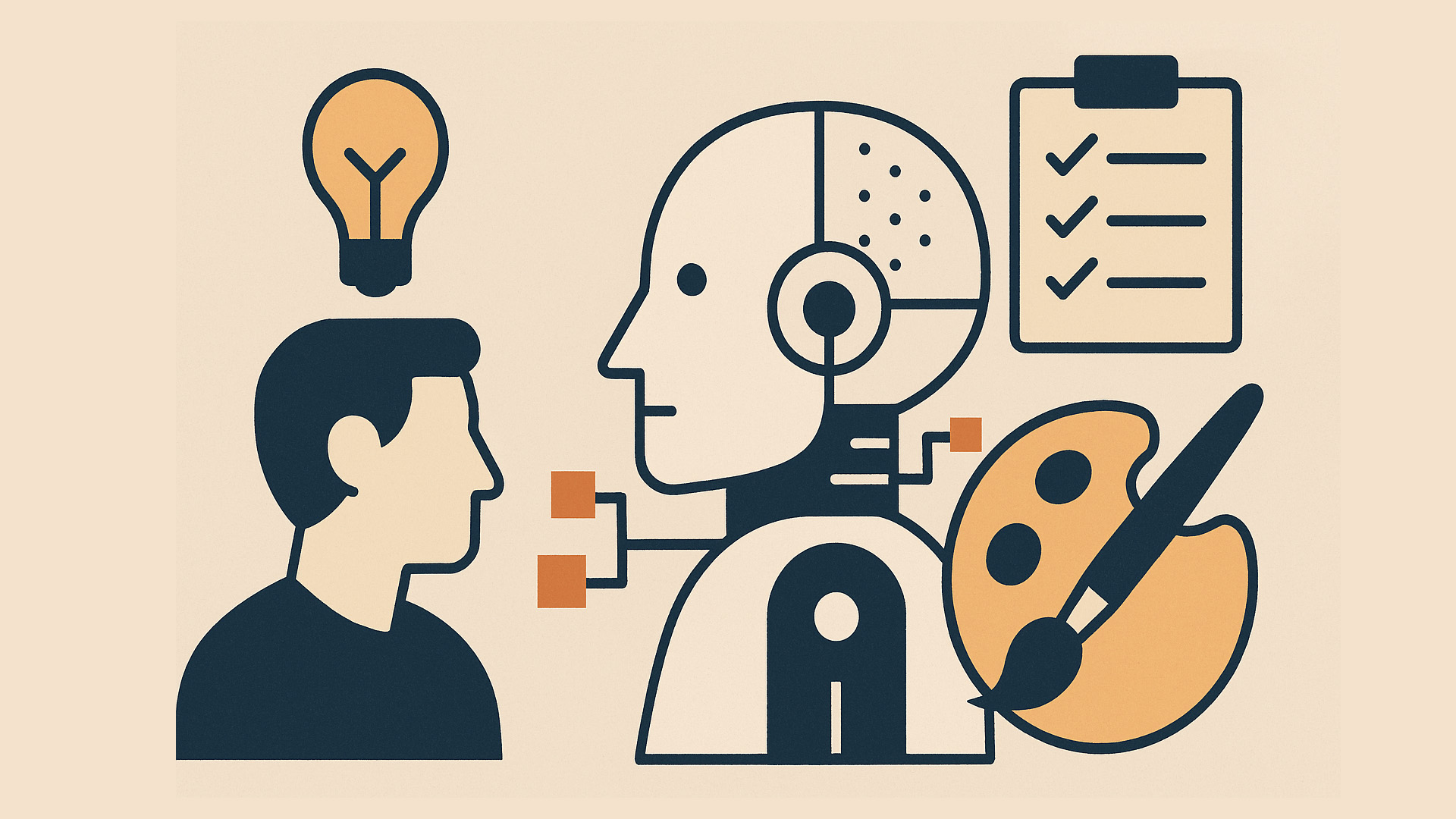

Find your next executive




Find your next executive
Find your next executive



There’s a myth going around that AI is going to replace marketers.
That myth is wrong — but it’s based on something true: AI has already replaced generic creative execution.
If your marketing team is still writing blog posts from scratch, doing first-draft copy in Docs, or A/B testing manually, you’re behind.
If your in-house design team is still drawing ad variants by hand, sizing social tiles in Photoshop, or iterating campaign ideas over six rounds of Slack threads — you’re burning time.
And if your agency is still charging five figures for scripts, moodboards, and 10-slide decks of “social creative concepts” — you're getting robbed.
AI didn’t kill marketing. It just killed the production bottleneck. The execution layer. The slow, expensive middle.
There used to be one path from idea to campaign: brief → brainstorm → asset → approve → launch.
Now, that path is split into two lanes:
The new marketing team is lean, strategic, and creative up front — and fully automated behind the scenes.
It’s not about fewer marketers. It’s about fewer production loops. Less drag. More launch velocity.
Let’s break this down by the parts of the funnel that AI is already owning:
You still need a voice. But you don’t need a blank page.
AI shines in:
One concept now spawns a dozen assets in minutes.
Tools like Clearscope, Surfer, and Jasper:
The grunt work is gone. Human editors focus on flow and voice.
AI now supports:
Email is still one of the highest ROI channels — and AI lets you test fast and often, which is what wins.
Tools like ChatGPT and Claude (fed with the right inputs) can:
You still need a strategist. But that strategist can now cover 10x the input volume with AI assist.
This is where the real opportunity lies.
AI is terrible at:
AI can remix. It can’t originate.
If your brand voice isn’t sharp before AI enters the room, it’ll never be. Because AI scales what already exists — it doesn’t create new tone or differentiation.
We tried.
We asked GPT to help create original brand concepts for a beverage line.
The results were:
It gave us:
So we pivoted.
We hired real creatives, workshopped around culture, tone, storytelling, and archetype — and came up with a sharp, sticky, ownable concept.
Then we used AI to expand it:
That’s the power combo: Humans for the idea. AI for the scale.
Here’s how the best marketing teams are working today:
Phase -> Human Role -> AI Role
Brand concept -> Strategy, vision, narrative -> None
Campaign ideation -> Theme, voice, positioning -> Prompt expansion, naming variants
Copywriting -> Final edits, tone calibration -> First drafts, translations, rewrites
Design -> Aesthetic, layout, creative direction -> Variant generation, resizing, remixing
Video -> Scripting, talent, editing POV -> Shot lists, rough edits, captioning
Analytics -> Interpreting impact, adjusting strategy -> A/B test setup, sentiment clustering, prediction
The best CMOs and heads of creative aren’t defending old processes. They’re rebuilding the machine to do what humans do best — and automate the rest.
The headcount shift is real.
You don’t need 3 copywriters, 2 designers, and an editor to run a campaign anymore.
You need:
This isn’t about cutting people. It’s about hiring for judgment and taste — not volume.
AI’s default is generic.
If your brand isn’t differentiated by:
AI will make it worse.
You’ll produce more. But you’ll sound like everyone else. And in a world of infinite content, sounding the same is a death sentence.
That’s why you still need creatives.
Not to write everything. But to define the blueprint that AI will scale.
If that’s not true? You’re likely just using AI as a novelty tool — not as infrastructure.
If you lead a marketing team today:
We’re not entering a world without creatives. We’re entering a world where creatives architect systems — and AI builds within them.
If your team is still operating like it’s 2017, burning cycles on drafts, revisions, resizing, and rebriefs — you’re not just wasting time. You’re losing ground.
The future of marketing isn’t human vs. AI.
It’s humans building brands — and AI pushing them into the world, at speed.
Sources & Data:

